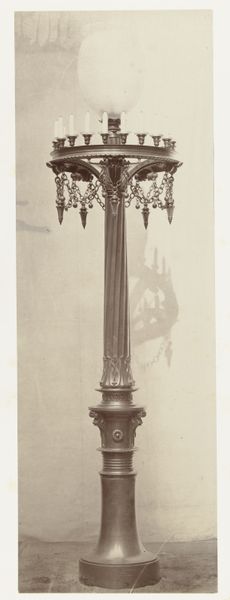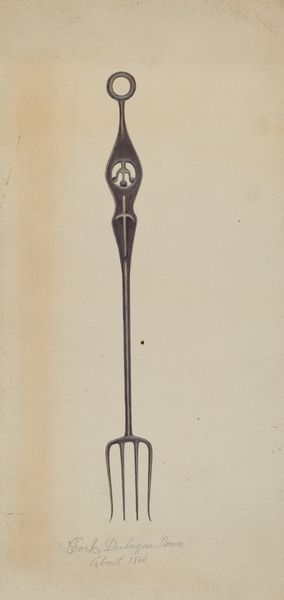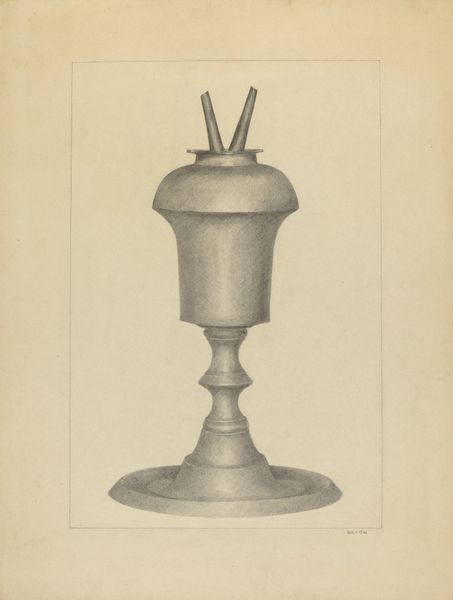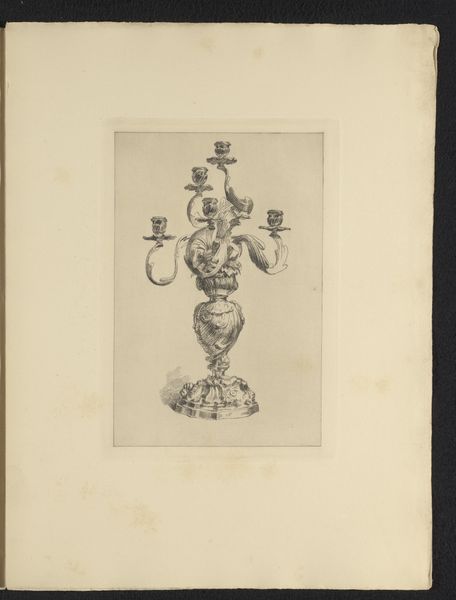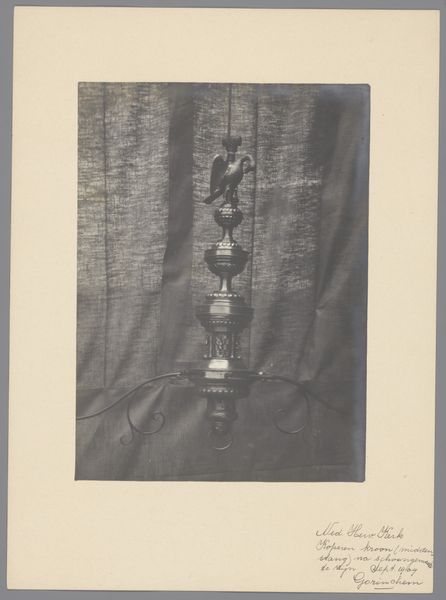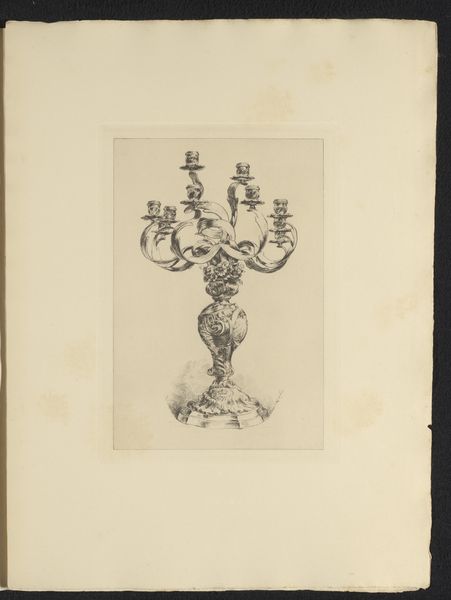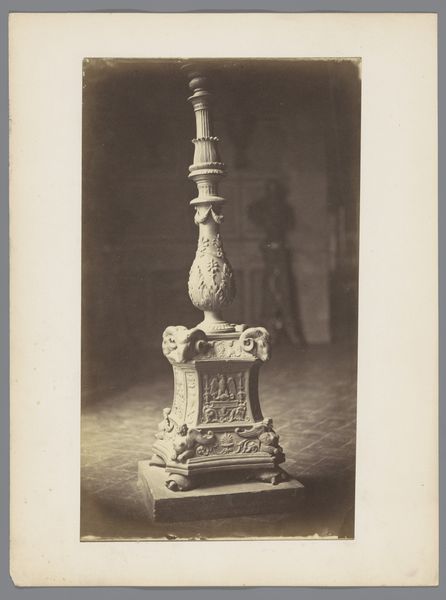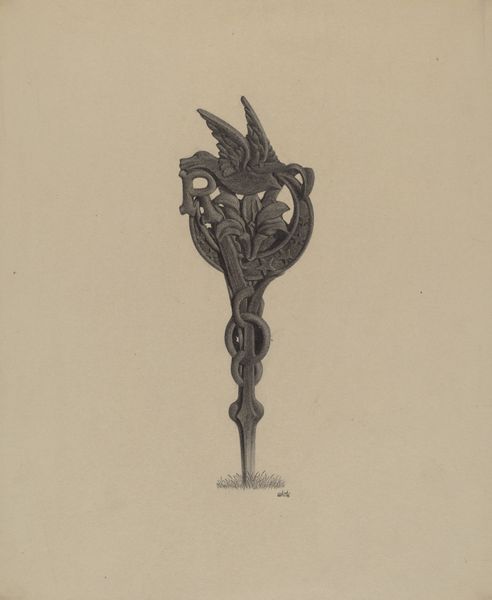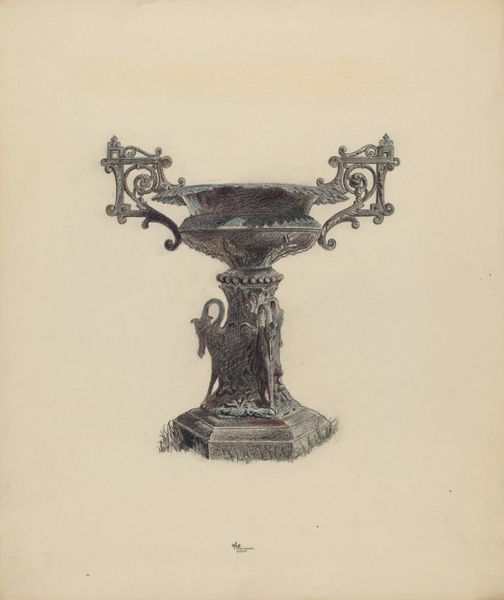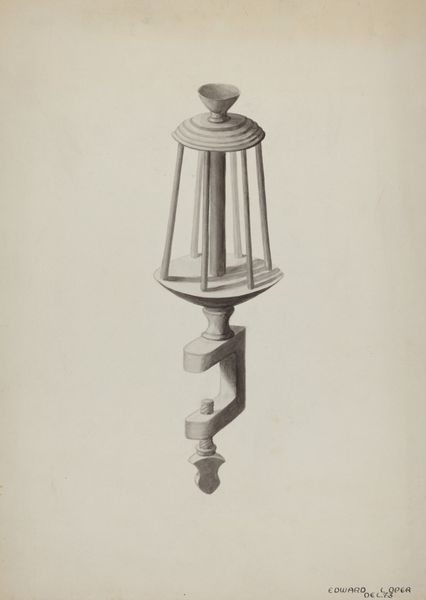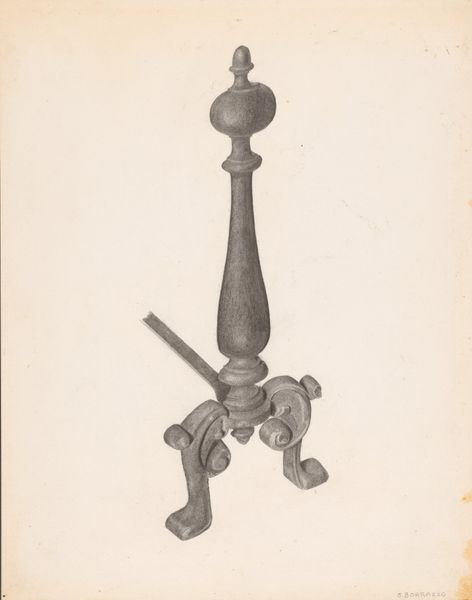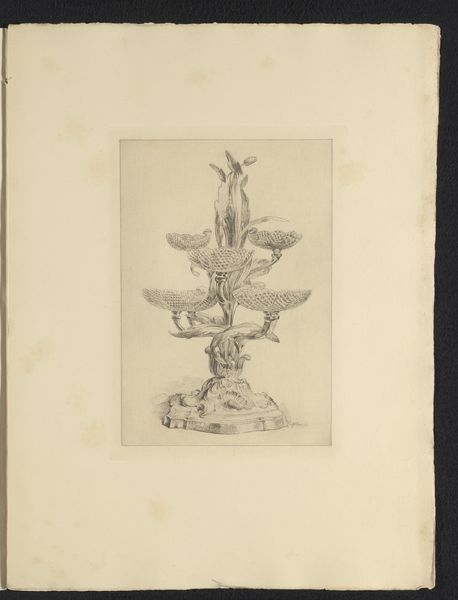
bronze, photography, gelatin-silver-print
#
portrait
#
still-life-photography
#
bronze
#
photography
#
gelatin-silver-print
Dimensions: height 249 mm, width 194 mm
Copyright: Rijks Museum: Open Domain
Curator: This photograph from the Edizione Brogi archive captures a bronze candelabra, believed to have originated from the Pistoia Cathedral sometime between 1875 and 1900. Editor: The high contrast immediately draws me in. It looks almost otherworldly, like a prop from a gothic fairy tale. The severe light source throws that dramatic shadow. Curator: These photographic archives were often commissioned to document historical artifacts, essentially creating a visual record of cultural heritage that could be widely distributed. The image itself takes on a new layer of meaning when considering how this form of photography participated in defining collective memory. Editor: Absolutely. This candelabra becomes a symbol, rendered iconic through the lens. I'm interested in the choice to present it isolated, a still life against an ambiguous backdrop. Stripped of context, does it elevate the object or subtly reinforce a certain Eurocentric viewpoint by celebrating European craftsmanship in isolation? Curator: It is difficult to overlook those dynamics. The materiality also carries significant weight; bronze is historically linked with power, durability, and artistry. The decision to photograph it enhances its perceived status. These photographs often circulated among elite circles, reinforcing existing social hierarchies. Editor: Right, but it also democratized access. Suddenly, objects like this are available to the masses through reproduction. Though, one wonders how such images influenced, or even altered the tastes of burgeoning middle classes. Also, beyond its implicit message about European artisanship, I question what other historical narratives remain obscured through its depiction as a decontextualized still life? What rituals, what makers are elided? Curator: Precisely. What appears at first glance to be an innocent documentation actually has many implications regarding visibility, preservation, and how art can function as a political statement in subtle yet powerful ways. Editor: Agreed. This image makes me keenly aware of what isn’t pictured, too. What was considered significant enough to immortalize through photography reveals such telling cultural priorities of the late 19th century.
Comments
No comments
Be the first to comment and join the conversation on the ultimate creative platform.
